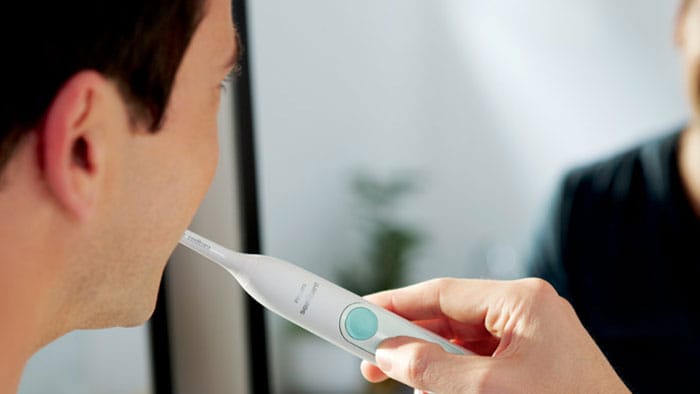
Gum recession: a guide to receding gum lines

If you’ve noticed you’re suffering from sensitive teeth, you could be experiencing receding gums on one tooth or more. You’re not alone, and we’re here to help. Gum recession is a widespread phenomenon and can have a variety of causes, including the following sources of gum erosion: Often, gum decline is caused by an untreated inflammation of the gums, leading to pain-sensitive teeth.
In this article, we’ll explore the cause of receding gums in more detail and answer questions like ‘do gums grow back? as well as explaining what you can do to stop receding gums, why this is important to do, and how to prevent gum loss in the future.
Gum recession is the process when the soft tissue that makes up your gums begins to recede along the gumline. When the gingival tissue is healthy, it creates a protective collar around your tooth. A receding gum line exposes the necks of your teeth, which can lead to tooth decay and pain-sensitive teeth.¹
Now that you know what gum recession is, you’re probably wondering what causes it. Ultimately, knowing the causes is the first step in being able to understand how to fix receding gums and more importantly, prevent them. Gum loss can have a number of different causes. The top causes of gum erosion are:² Of course, while these are the most common causes of gum recession, there are others too. The following could also be causes of receding gums: Now that you know what causes gum recession, read on to discover top tips to stop receding gums and prevent gum loss in the future.
Do gums grow back? We’re sorry to tell you the answer is no. However, if you want to fix receding gums, we have a few tips to help you stop receding gums.

If poor oral hygiene is a top cause of gum recession, it stands to reason that diligent oral hygiene is one of the most important things in the prevention of mouth and dental illnesses, including gum recession. Don’t forget one of the most basic ways to help prevent receding gums: teeth cleaning. The following steps can help you both stop receding gums and prevent them before the occurrence of gum loss: In addition to rigorous oral hygiene, you should consider the following in order to stop and prevent a receding gum line: Don’t wait too long if you think you are suffering from gum recession, even if you’ve only spotted receding gums on one tooth. We can give a general overview of gum conditions, but it’s important to contact your dentist for an expert opinion.
Tip: If you don’t like to floss, you could opt for an interdental brush instead or a specialist product such as the Philips Power Flosser.
ProtectiveClean 4300
Black
HX6800/44